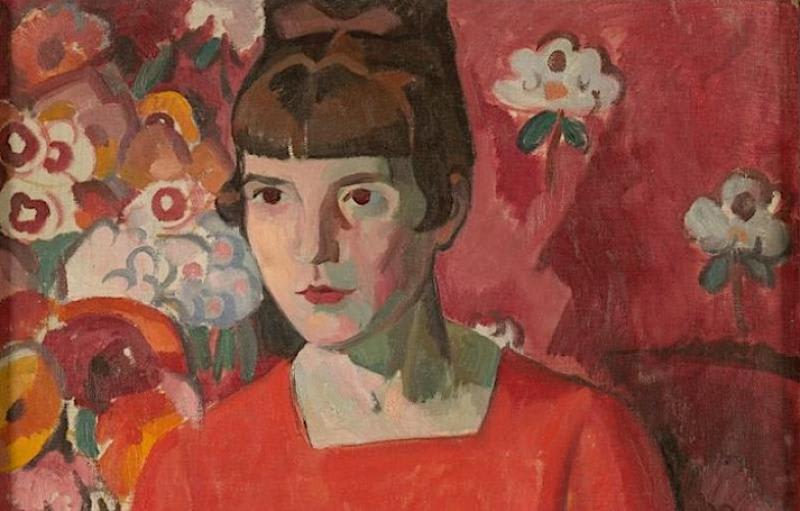Book of the Week: Katherine, conscious of everything
ReadingRoom
Vincent O’Sullivan on a new volume devoted to Katherine Mansfield
Most of those who knew Katherine Mansfield, or cared for her, thought there was something desperate about her going off to the Gurdjieff Institute in the last months of her life. That, or just weird. To head off in winter, for a “spiritually refashioning” commune out of Paris, led by an Armenian guru sometimes taken for a conman, and called “the rug merchant” even by Mansfield herself, was a far cry from what the doctors ordered for a young woman dying of consumption. It took a long time, and numerous books, to swing to the view that is now mostly accepted. It was not only courageous. It was wise, in the sense that no other behaviour could have saved her, or given her the freedom to die on her own terms. It was trust in her own instincts and decisions that still so validate her.
Claire Harman’s All Sorts of Lives: Katherine Mansfield and the art of risking everything is a consistently clear-eyed and critically astute gathering of 10 essays that take 10 of Mansfield’s stories, discuss them as fiction of an extraordinarily original kind, and shrewdly, convincingly, relate them to her life, the stories behind the stories. The book also argues, without fanfare or over-reaching, that the publication of The Garden Party in 1922, that remarkable benchmark year for Modernism, places Mansfield there not as the very much minor voice with Joyce and Eliot, but as a comparably serious figure, in her refashioning of what was thought of as the short story in English. Harman reminds us of all this in an engaging, perceptive critical work, that is inseparable from the rich expanse of Mansfield biography. What the book so insists on, and so compellingly brings home, is Mansfield’s utter commitment to the demands of writing, in what literally was a life-and-death business. And as part of that vocation, “her extraordinary sensuality, her humour and her capacity for joy.”
In her last weeks at Fontainebleau, a new Russian friend asked Mansfield what it was that she wrote. “Short stories,” she said, “just short stories.” As if that wasn’t really so much to have achieved. Claire Harman puts that ‘just’ in its place once and for all. It is unlikely that another biography at this point would do more than offer a different slant to what we already know, to all that has been retrieved since Antony Alpers’s Life in 1984, that great quarry every writer on Mansfield inevitably returns to. Yet as with most great writers, she seems constantly to demand new perspectives. Harman now comes at her in a way that would have appalled those now faded academic legislators of 30 or so years ago, with their insistence to read fiction, even partly through the lens of the writer’s life, was a cardinal sin. The high priests and priestesses of Theory, could be a tough crew. I remember one telling me that Theory was harder to write than Fiction, a curious certainty, seeing she herself wrote neither.
Harman is happy to be down among the sinners, and gloriously so. She chooses 10 stories which she discusses in straight-forward terms of character, setting, presenting the challenges of time, avoiding ‘conventional’ expectations. She does this expertly, modestly. She is excellent on just how Mansfield so blithely breaks what the short story customarily did, and turning traditional narrative with sharp, deft, compositional leaps.
Francis Carco, a randy little fox terrier of a Frenchman, got what he wanted from their affair. So did Mansfield, with the finesse of an anatomy dissection
Mansfield talked of “the life in the life of it”, how much might be skimmed at depth from the ordinary and brimming details and moods and exchanges that surround her. The fine discussion of “Je ne parle pas francais” could stand as Exhibit A in how to read a short story. So much of the writer’s life – her recklessness, her passion for something new, her letters, her recriminations, her impetuous living “on the wing” – are bundled together behind this story, as they were in so different a fiction as “An Indiscreet Journey”, with the same real life lover in both, in a fairly brutal exchange of this for that. Francis Carco, a randy little fox terrier of a Frenchman, got what he wanted from the affair. So did Mansfield, with the finesse of an anatomy dissection.
Mansfield’s publisher insisted that parts of the longer story be deleted. They were thought too strong for contemporary taste. They have been restored of course in later editions. But it still shocks, when with almost shivery pleasure, the narrator tells you of his being abused as a child by a huge washerwoman, the kick he gets from remembering. You’d be hard put to find single innocuous words that carry so much aroused perversity as that “growl” in the laundry, or the repellent effect of “mushrooms” in the story’s last sentence.
Harman makes much of just how Mansfield was her own woman. It was not only as a writer that she worked towards something new. Considering her early but profound allegiance to Oscar Wilde, there is no surprise in her so striking those who knew her, whether or not they liked her, as intensely individual. Her vocation, in its painful but enduring way, to ‘fashion’ herself. It is there in Harman’s sub-title: Katherine Mansfield and the art of risking everything. It was part of her drive to push further with short fiction than it had so far gone.
It was there too in her impossible hope to shape life as though it were a performance, and that feeling since a teenager, that to be confined to one life demanded its own urgency. It has stuck in my mind that when I met the elderly Richard Murry in the 1980s, still as devoted to Mansfield as when he had been a teenager and she so championed him, the image he hit on to give me some idea of her vivacity, her standing out from the run of her time, was to say, “Those punk girls you see on the King’s Road – they make me think of Katherine.”
It’s a palpable thing, this afterglow you might call it, when people reminisced about her, or when writers as fine as Harman attend closely to what she wrote, and the life the writing came from. KM is too tough to sentimentalise, or to be conscripted to someone else’s beat. Some of the earlier writing about her doesn’t do her justice, and some occasionally is still caught up in the little vanities of an editor or commentator thinking she has a hot line through to ‘her’ Katherine. Some hope!
Claire Harman quotes, near the end of her book, DHLawrence’s saying after her death, Mansfield was good but wouldn’t last. I’ll end instead with a brilliant remark of his, yet not directly referring to her work at all, but the ‘machinery’ of the mind that stood behind it.In his novel Women in Love, in 1921, he drew heavily on his friendship with Mansfield for the character Gudrun. There was a time when they had talked a great deal together, and he caught as concisely as any has done, one vivid aspect of her mind. He imagines her lying sleepless in the night, “conscious of everything – her childhood, her girlhood, all the forgotten incidents, all the unrealised influences, and all the happenings she had not understood pertaining to her family, to her friends, to her lovers, her acquaintances, everybody. It was as if she drew a glittering rope of knowledge out of the sea of darkness.”
All Sorts of Lives: Katherine Mansfield and the art of risking everything by Claire Harman (Chatto & Windus, $) is available in bookstores nationwide.





